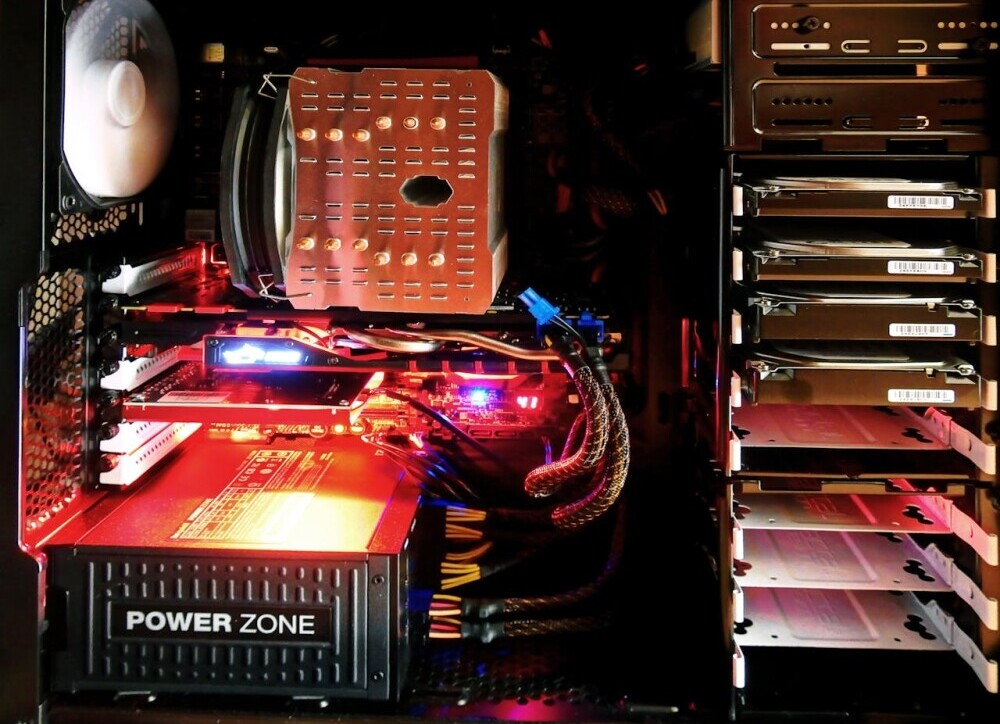
Technology vs Gadgets: Understanding the Connection
In today’s fast-paced digital world, we constantly hear the terms technology and gadgets. While they are often used interchangeably, they are not the same thing. Technology is the broad system that drives innovation, while gadgets are the physical, user-facing products born from that system. Understanding the difference helps us appreciate how innovation shapes our daily lives.
🔹 What is Technology?
Technology is the application of scientific knowledge to solve problems and achieve goals. It acts as the foundation behind almost everything we use today.
- Broad Application – Goes beyond devices, covering industrial systems, healthcare equipment, and global communication networks.
- Diverse Forms – Includes artificial intelligence, robotics, 5G connectivity, and more.
- Enabler – Without technology, gadgets could not exist—it powers their creation and evolution.
🔹 What are Gadgets?
Gadgets are the tangible products of technology, often smaller, innovative tools designed for specific functions.
- Specific Tools – Focused on practical uses, from smartphones to smartwatches.
- Purpose & Novelty – Often created with unique or clever features that add convenience.
- Examples – Mobile phones, tablets, gaming consoles, laptops, health trackers, and wearable devices.
🔹 The Relationship Between Technology & Gadgets
- Gadgets = Products of Technology – They are the results of technological breakthroughs.
- Technology Powers Gadgets – Every new wave of tech (like AI or AR) gives birth to more advanced devices.
🔹 Examples of Current Technology and Gadgets
- AI & 5G – Making devices smarter and faster.
- Augmented Reality (AR) – Opening new doors for consumer gadgets and experiences.
- Wearables – Smartwatches, earbuds, and health trackers improving productivity and lifestyle.
Technology is the backbone, while gadgets are its creative expression. By understanding their connection, we see how innovations move from ideas to devices that shape how we work, communicate, and live daily.
Tech Trends And Innovations

Artificial Intelligence isn’t just a concept from sci-fi anymore—it’s becoming a crucial part of our everyday lives. In healthcare, AI’s diagnostic capabilities are taking center stage, helping detect diseases at incredible speeds and with improved accuracy. Just imagine the possibilities when AI systems can perform routine tests, freeing up medical professionals to focus on more complex tasks.
Finance is another field where AI shines, simplifying things like fraud detection with real-time data analysis. Algorithms sift through streams of data, identifying fishy activities quicker than any human. It’s making financial services smarter and safer.
But let’s chat about the elephant in the room—the ethics of AI. Automating jobs and collecting data comes with some serious questions. There’s a big conversation around how to govern AI to ensure it’s fair and transparent, without crossing those privacy lines.
And speaking of algorithms, AI is pushing the limits of predictive analytics. It’s about taking raw data and using complex algorithms to predict stuff we couldn’t even guess before. It’s not just fascinating—it’s practical and changing the game in industries all around the world.
2025 and Beyond: Tech Trends to Keep an Eye On
Looking ahead to 2025, technology is gearing up for some massive shifts. Electric and autonomous vehicles are at the forefront, as AI integration promotes smarter and safer driving experiences. The focus is on reducing emissions while enhancing vehicle autonomy, making roads safer for everyone.
Augmented reality and virtual reality aren’t just buzzwords anymore; they’re taking education to a whole new level. Educators can now create immersive learning environments that facilitate interactive and engaging student experiences. Imagine history classes where students can walk through ancient cities or science lessons exploring the human body in 3D.
Wearable tech is changing how we manage personal health. From smartwatches that track your vitals to apps offering personalized health advice, these gadgets continue to evolve into must-have personal health tools. Keeping an eye on your health has never been more connected—or convenient.
Eco-friendliness is no longer just an option—it’s becoming a priority. With tech advancements driving sustainable innovations, companies are investing heavily in developing eco-conscious products. This means everything from solar-powered gadgets to technology designed to minimize carbon footprints. Embracing a sustainable future is clearly the path tech is heading down.
Quantum Computing: The Next Frontier in Tech Development

Quantum computing is like stepping into a new world of possibilities, opening doors to capabilities that traditional computers can’t touch. The basic premise involves leveraging quantum bits, or qubits, which allows these computers to process information at unprecedented speeds.
Industries like finance are on the brink of a revolution with quantum computing. Imagine modeling complex financial markets or optimizing portfolios with precision unheard of before. Pharmaceuticals stand to benefit too with drug discovery processes becoming faster and more accurate, potentially offering breakthroughs in treatments.
Cybersecurity could see a whole new level of protection, given quantum computers’ immense processing power. This might radically change encryption methods, making them nearly impossible to crack by conventional means.
Yet, scaling quantum technology isn’t without its set of challenges. The tech is still in its nascent phase, with stability and error rates being significant hurdles researchers are tackling. It’s a slow and steady race, but one with immense potential payoffs.
The rise of quantum technology has also led to collaborations between traditional tech firms and quantum pioneers. These partnerships are crucial for integrating quantum capabilities into everyday applications and accelerating development across sectors.
Connectivity Revolution: 5G and the Rise of Edge Computing

5G is fast becoming the backbone of our tech-driven world, pushing connectivity to the next level. It’s all about stronger, faster, and more reliable internet connections that can support a massive number of devices communicating in real time. This isn’t just about having faster internet on our phones; it’s a whole new experience for smart devices in our homes and cities.
The transition from 4G LTE to 5G represents a leap forward that enhances everything from streaming speed to the responsiveness of autonomous vehicles. Smart cities are set to benefit immensely from these improvements as they step up capabilities for managing traffic, resources, and public safety.
However, the rise of edge computing brings new dynamics into play. While cloud computing dominates, edge computing offers the chance for data processing closer to the actual data source. This reduces latency, which is vital for real-time applications like video gaming and autonomous driving.
Balancing between cloud and edge isn’t a competition. It’s more about finding synergy between the two for optimal efficiency. Edge cuts down data transfer distances, easing the pressure on centralized cloud systems. It’s changing how we handle data—processing it faster and more locally, reducing bottlenecks and enhancing user experience.
5G isn’t just boosting connectivity; it’s fostering innovation across sectors. Remote work and virtual conferencing have seen quantum leaps in efficiency thanks to improved internet speeds and reliability. This opens up the potential for immersive remote experiences that are a far cry from what used to be possible.
Gaming Sure Has Come A Long Way Since The Days

Gaming sure has come a long way since the days of Pong. Can you believe that the digital gaming world was kick-started by a simple table tennis simulation back in the 1970s? Pong laid the groundwork for what would become a multi-billion dollar industry, and it’s kinda wild to think about just how far we’ve traveled since then.
Back in the day, you’d have to hit up an arcade to get your gaming fix. Now? We can experience lifelike graphics and immersive worlds right from our living rooms. The journey from pixelated screens to today’s ultra-HD graphics is basically a victory lap for technological innovation. Home consoles like the Nintendo Entertainment System and the Sony PlayStation were game-changers, literally bringing the arcade vibe home.
Remember when characters like Mario and Zelda first appeared on the scene? Those dudes became legends and played a massive role in shaping gaming culture. They weren’t just about rescuing princesses; they were about capturing the imagination of every player and becoming a cultural phenomenon along the way.
Esports, anyone? The competitive gaming scene has exploded, pulling in audiences bigger than the Super Bowl. What’s insane is just how fast esports shifted from a fringe hobby to legit mainstream entertainment, where gamers are now actual rock stars with fans cheering them on during international tournaments.
The Gaming Industry: An Unstoppable Force in the Economy

Gaming once was just a basement hobby, but now? It’s a powerhouse contributing billions to the global economy. The industry has seen a ridiculous growth spurt, and it’s not showing any signs of slowing down. Global GDP? Yep, gaming’s got its fingerprint on that too. No longer just a pastime, it’s a full-blown economic force.
Ever noticed how everyone’s got a game on their phone these days? Mobile gaming’s taken over, making games super accessible and changing the way they’re designed. From candy crushing to farming, mobile games have opened up the world of gaming to folks who might have never picked up a controller before.
Indie developers are like the cool indie band of the gaming world—always bringing something fresh to the table. These smaller developers are pushing creative boundaries and introducing us to unique gameplay experiences. They remind us that sometimes innovation comes in the form of pixel art and heartfelt storytelling.
And then there’s the whole universe of in-game purchases, sponsorships, and ads. They might seem like little things, but they’re huge money-makers, altering how games are monetized and keeping the industry flush with cash.
For the younger crowd dreaming of turning gaming into a career, the opportunities are wide open. From game design to shout-casting esports tournaments, there are careers here that didn’t even exist a decade ago. The appeal of making a living in gaming is super real, with roles as diverse as the games themselves.
The Future of Gaming: Trends that Will Shape Tomorrow’s Play

Virtual Reality (VR) and Augmented Reality (AR) are revolutionizing the way we play, offering immersive experiences that were once the stuff of sci-fi dreams. Imagine stepping into your favorite game and being surrounded by its world—it’s not far off from becoming an everyday reality at this point.
Cloud gaming is another huge trend to keep an eye on. No more worrying about storage space or hardware requirements—all you need is a solid internet connection. This shift could redefine how we access and own games, making them more like a service than a traditional product.
The idea of a ‘metaverse’ is getting a lot of hype, and for a good reason. This interconnected digital space could reshape social interactions, making multiplayer experiences even more engaging as they blend with real life. Think endless possibilities for meeting, playing, and even working within these virtual universes.
Representation and inclusivity are finally getting the attention they deserve. Game developers are working to ensure that narrative and character choices reflect the diverse world we live in today, offering all players a chance to see themselves on screen.
As gaming tech evolves, so do ethical questions, especially with AI. How AI monitors player behavior or personalizes in-game experiences raises privacy concerns and considerations that developers are beginning to navigate thoughtfully.



